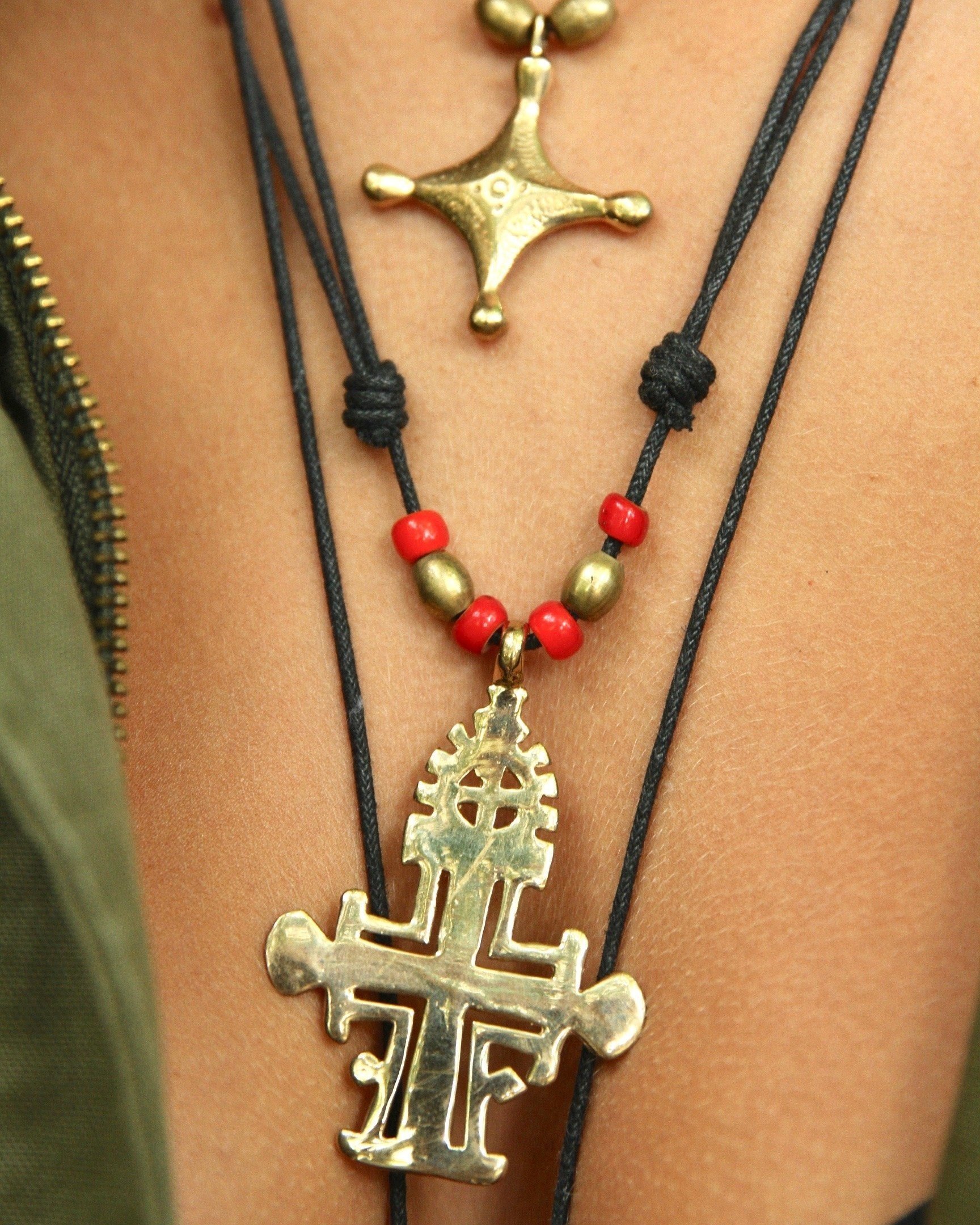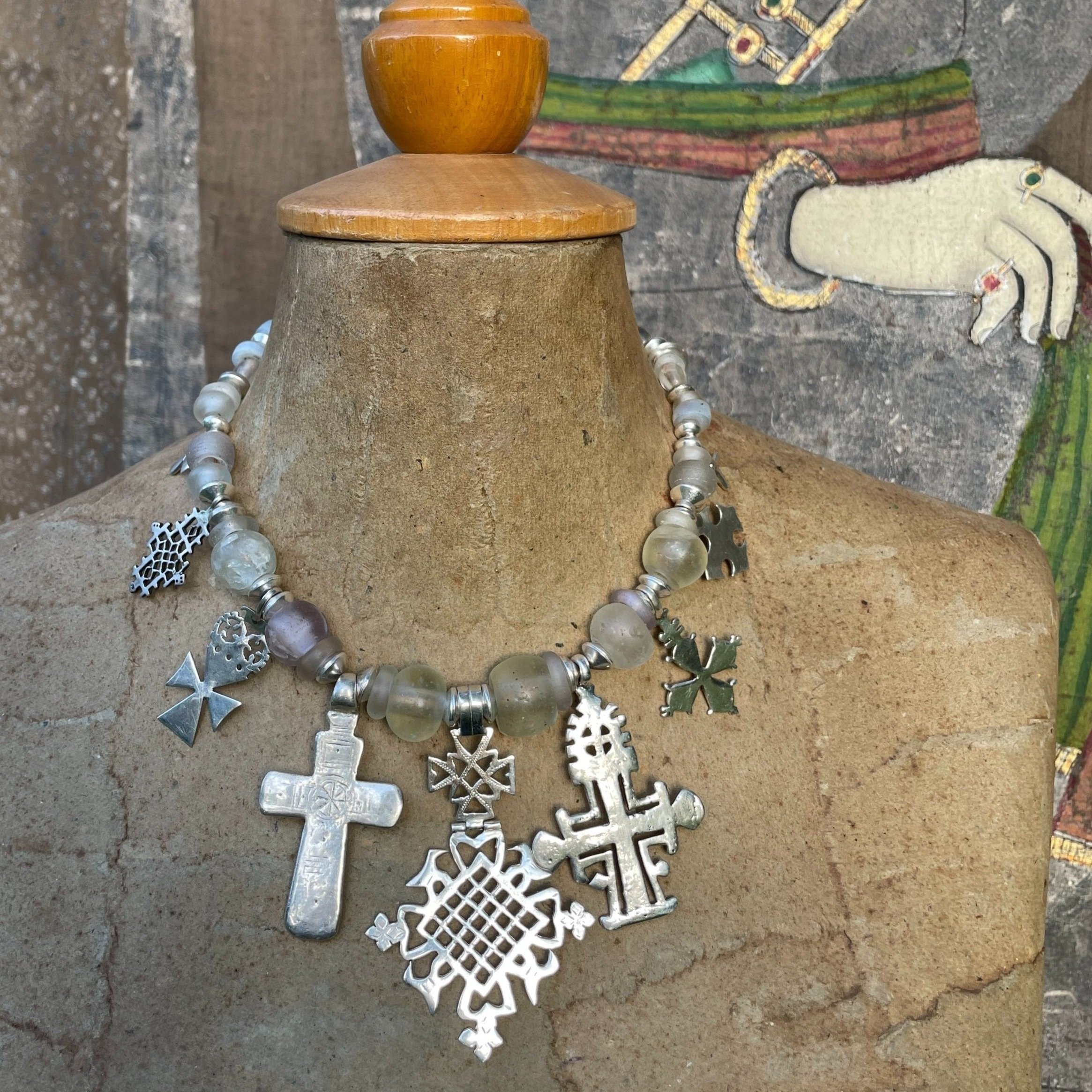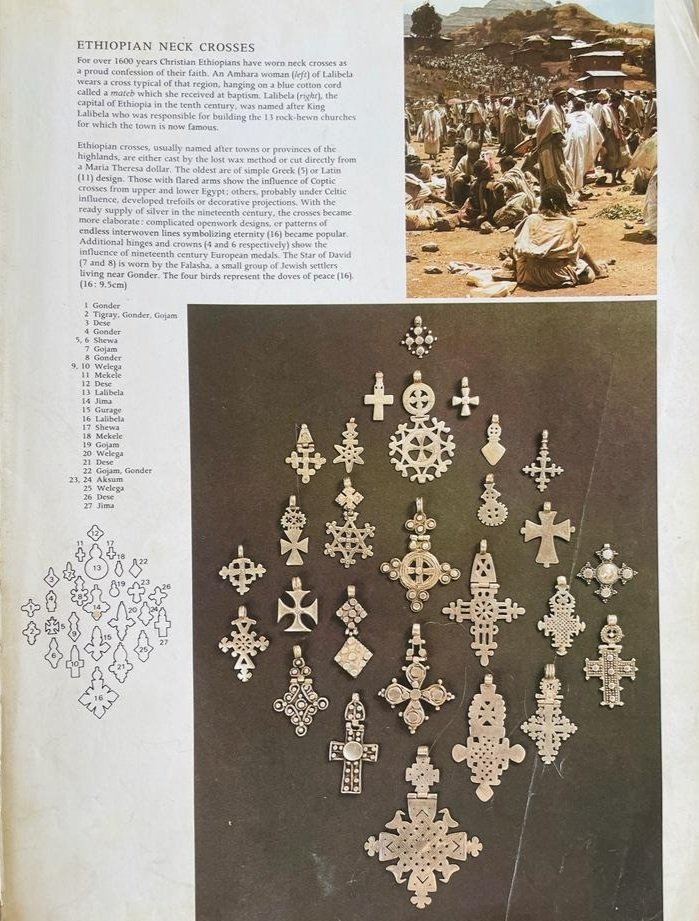ETHIOPIAN NECK CROSSES
The Christian faith was initially adopted in the fourth century AD by King Ezana, in the ancient Kingdom of Askum (located today in Eritrea and the Tigray region of Northern Ethiopia). From that time, the Ethiopian Christians have worn their neck crosses as a statement of their faith. The Ethiopian cross varies regionally in design and they are either cast using the lost wax method or cut directly from their base metal. The crosses have a rich and varied array of influences which Angela Fisher describes in her wonderful book Africa Adorned:
“The oldest are simple Greek or Latin design. Those with flared arms show the influence of Coptic crosses from upper and lower Egypt; others, probably under Celtic influence, developed trefoils or decorative projections. With the ready supply of silver in the nineteenth century, the crosses became more elaborate; complicated openwork designs, or patterns of endless interwoven lines symbolising eternity became popular. Additional hinges and crowns show the influence of nineteenth century European medals. The star of David is worn by the Falasha, a small group of Jewish settlers living near Gonder. The four birds represent the doves of peace.”
Sally has been collecting Ethiopian crosses for 25 years. She creates necklaces incorporating the crosses in either Silver or Brass set alongside beautiful precious stones. Many Ethiopian crosses were made by Jewish silversmiths who left Ethiopia in the mass exodus to Israel escaping persecution, famine and civil war during the 1980s and 1990s. Consequently, the better quality crosses are much harder to find and some of Sally’s recent pieces are cast from older examples from her collection.
The Ethiopian people wear the crosses not only as a religious emblem, but also as a sign of wealth. Invariably they are also sold during times of hardship.
Sally creates individual necklaces with single crosses, but also brings other crosses together in her World Talisman Crosses necklace and her World Amulets necklace (a joyous bringing together of many wonderful cultures and symbols).
This image is from Angela Fisher’s book Africa Adorned - many thanks for allowing us to use it. Sally has found this book an invaluable treasure trove of information and often refers to it.






